In January, our team had the opportunity to visit one of the farms we partner with, La Minita. This trip left a lasting impact on all of us. We got to witness firsthand the power of sustainable farming practices and the amount of work that goes into even just one cup of coffee beans. One thing’s for sure—We walked away with more knowledge and a greater appreciation for our morning cups of coffee.
From Mississippi to Costa Rica
Located in Costa Rica, La Minita is just one of many coffee farms scattered across the country. You can’t fly directly to this remote farm, so we landed in San Jose and took some time to acclimate to the different culture (and altitude!). Coming from a mere 279 ft. above sea level in Mississippi, we needed that day to adjust to the 3,200 foot altitude.
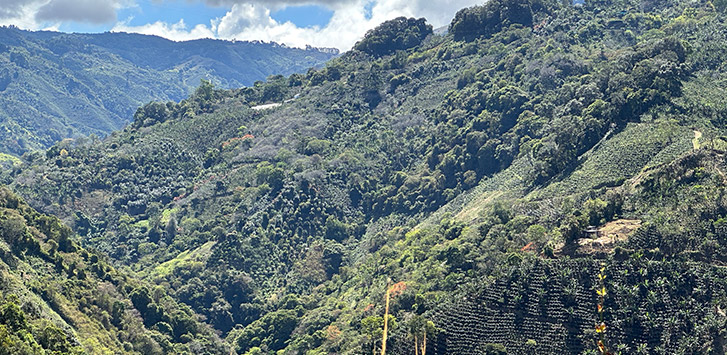
After staying in San Jose for one night, we prepared for our two-hour drive to La Minita. There’s only one word for Costa Rica – Paradise. Rural roads spider web across the country, unpaved, chunky, and full of potholes.
While not dangerous, this drive was far different than anything us Americans were used to. Navigating hilly terrain, steep switch backs, and heightened elevations, we finally reached our destination – the La Minita coffee farm. Massive eucalyptus trees, sporting beautiful, vibrant colors, lined the road on either side, as we drove up to the farm.
Standing at over 4,800 ft., the farm looked out over neighboring mountains and valleys. At certain elevations, you could see where the vegetation stopped growing and where coffee trees were planted.
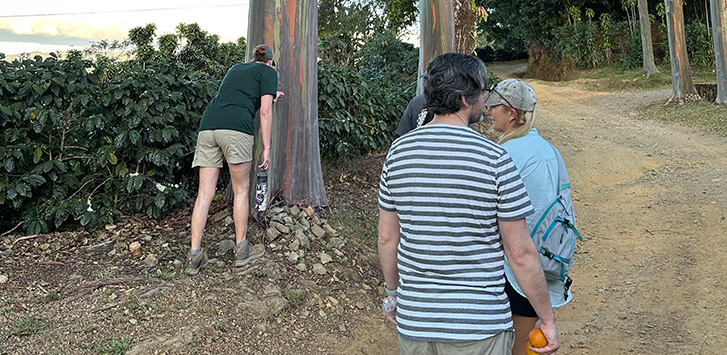
The La Minita Farm
Covering almost 1,000 acres, the La Minita farm is continuing to expand. Surrounded by two rivers, coffee plants have taken over every available space on the mountain, reaching as far as the Tarrazu border. Many of the La Minita coffees share some of the prominent (and well loved) cupping notes from the Tarrazu region because of this.
The La Minita farm is part of a larger network of coffee farms under the parent farm, also called La Minita. Comprised of around seven farms across Costa Rica, the parent farm capitalizes on the various growing regions of Costa Rica, capturing the nuanced flavors of each. The parent La Minita produces our La Magnolia, Half Caf La Magnolia, and Decaf La Magnolia, as well. These coffees have a sparkling, clean citrusy brightness with rich chocolatey notes, overtones of nuts, and a complex finish. They’re well worth a try and make the La Minita company proud.
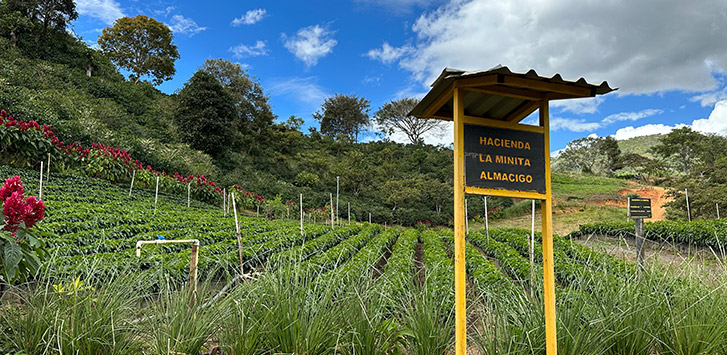
During our stay, we had the opportunity to tour the entire farm. It’s amazing what it takes to run the place. We walked through the workers’ housing units (there are 80 on site!), visited the clinic where a doctor and dentist come every week, watched the farm equipment at work, and toured the business offices on the farm.
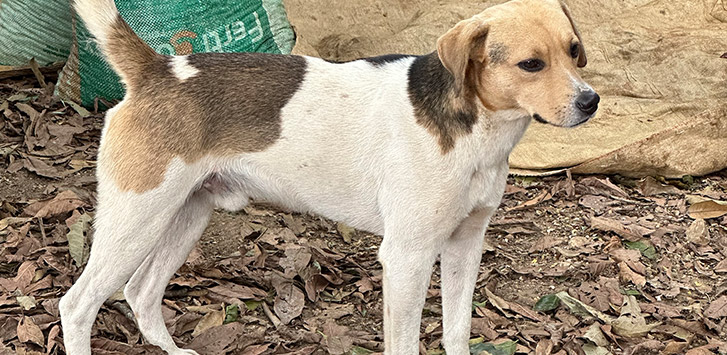
And, of course, every coffee farm (or coffee business) needs a dog. The La Minita dogs were constantly running around and underfoot during our tour, exploring the farm with us. Did it make us homesick for our four-legged friends back home? Definitely. But it was so fun to meet the dogs that keep La Minita running.
Costa Rica Coffee Growing Conditions
La Minita is located in just one of the many, different growing regions of Costa Rica. Obviously, we love their coffee, but what sets this coffee apart from the rest of the world? And what sets La Minita coffee apart from the rest of Costa Rica?
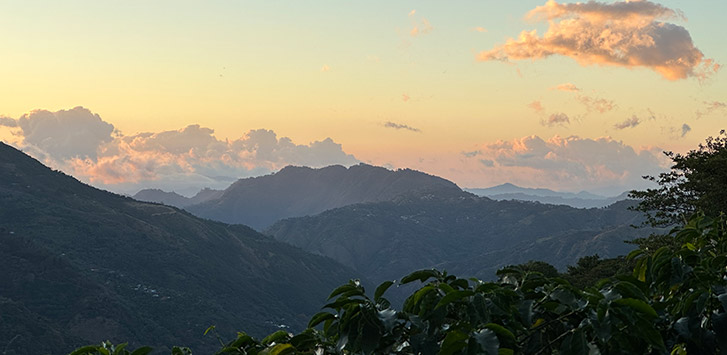
Costa Rica’s growing conditions are characterized by one thing – its unique micro-climates. Steep mountains, shaded valleys, nutrient-dense soil, and wide-ranging altitudes cultivate diverse micro-climates for coffee growing. As coffee plants grow in various micro-climates, they develop different flavor profiles. And that’s what sets apart each coffee from one another!
The main growing regions in Costa Rica are Central Valley, Tres Rios, Turrialba, Brunca, Guanacaste, Orosi, West Valley, and Tarrazu. The Tarrazu region, closest to La Minita, is considered by many to produce the best coffee in all of Costa Rica (We may be biased, but we have to agree).
As the largest growing region, Tarrazu accounts for approximately 1/3 of all coffee grown in Costa Rica. The rich, volcanic soil (thanks to the Quepos Mountains), cool climate, and high altitudes create a striking acidity, deep richness, and full body. All characteristics you’ll taste in a good La Minita cup of coffee, but we’ll get to that later.
Harvesting Coffee Beans at La Minita
We were lucky enough to visit the coffee farm during their harvesting season and witness how they harvest and process the coffee cherries. November to January is La Minita’s main harvest season for most of its coffee plants.
Because La Minita focuses on quality over quantity, workers handpick the coffee cherries off the plants, leaving the unripe ones for another day. This method is also preserves the plants’ health, as workers are able to gently handle the plant, not breaking any of the leaves off, which could damage the plant in the long run and reduce its yield next season. To our entire team’s excitement, we got to try our hands at harvesting, too!
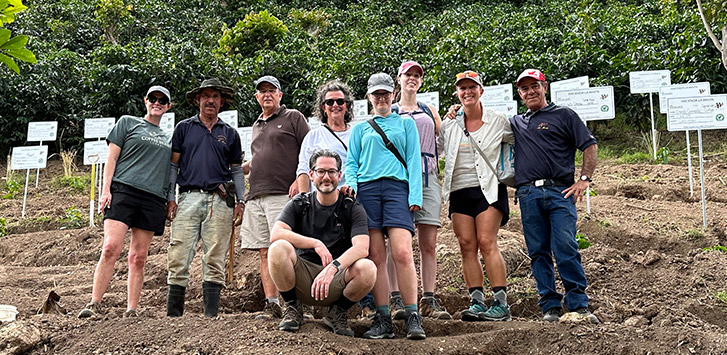
For an hour, our team walked up and down the mountain, picking ripe cherries and leaving the unripe ones alone. Once our time was up, our La Minita tour guide walked us down the mountain to the receiving station, where we weighed and measured each team members’ bag.
For an hour’s work, we each made between $0.50 and $1.00. While that’s incredibly low to our American standards, it’s normal, and even on the better side, for coffee workers. The best coffee workers tend to make $1.50 per hour.
Many coffee farms pay their workers based on the weight of their bags, but La Minita avoids this practice to ensure the workers focus on quality, rather than quantity. While they still weigh and measure the bags to track how well each worker is doing, they pay them a livable, hourly wage for quality work.
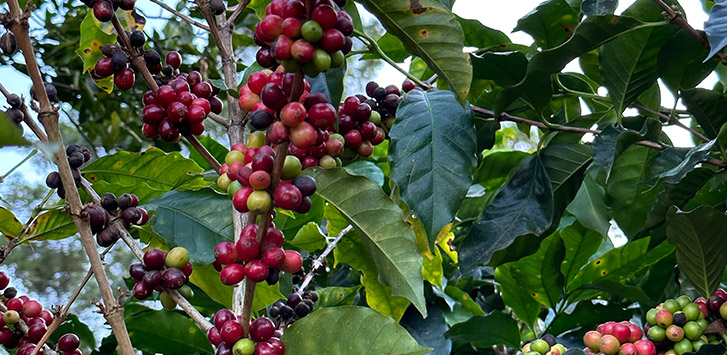
As harvesting season comes to an end, workers have to pick all the coffee cherries on the plants, whether ripe or unripe, so that the plants stay healthy. This means they spend some extra time at the end of their harvesting shift sorting out the ripe cherries from the unripe because one unripe coffee bean will ruin the entire batch. Don’t believe this? We didn’t either at first.
The La Minita team brewed two cups of coffee for us—one with our favorite La Minita blend and one with a couple of unripe coffee beans added to our favorite blend. The result was offensively surprising. The crisp, clean, bright cup of coffee we know and love was dampened, less flavorful, and overall disappointing. We all walked away from that experience with a renewed appreciation of the effort the workers go to so that we can drink good coffee.
The Coffee Farmers
Let’s talk about that now—the part we often don’t talk about, the coffee workers.
When you make yourself a cup of coffee in the morning, you’re probably not thinking about the coffee farm workers who made your daily cup of coffee possible. But without their dedication to quality and hard work, you’d never be able to enjoy your morning pour-over or French press or drip brew. You get the idea.
A lot of coffee workers are needed to keep a farm running. But it's one thing to know how many coffee workers are needed and a completely different thing to see it and appreciate it. That really hit home for us during this trip.
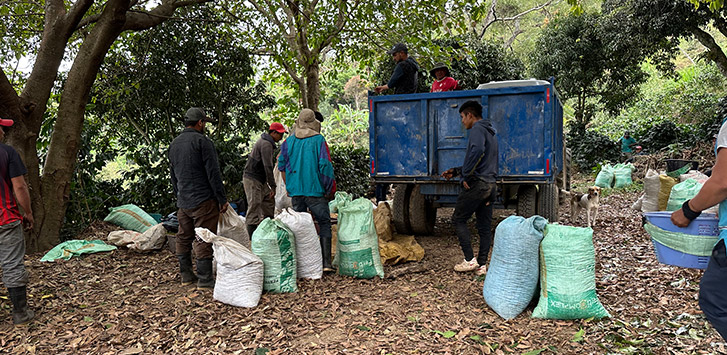
La Minita has 80 housing units on the farm for all the workers during the harvest season. While many of the workers live on the farm year-round, during the peak harvest season, migrant workers travel from South America to help harvest the coffee cherries.
We’ve talked a little bit about what makes La Minita so special, but what really sets it apart is its dedication to the workers. La Minita creates a more sustainable ecosystem with higher wages, actual farming education for all of its workers, and gender equality. We’re proud to partner with a coffee farm that places their workers’ health over profit.
Processing Coffee Cherries at La Minita
One of our favorite parts of the trip was getting to see the farming process from harvesting to processing. Unlike many coffee farms, La Minita owns a coffee mill, so they’re able to process all their coffee in-house.
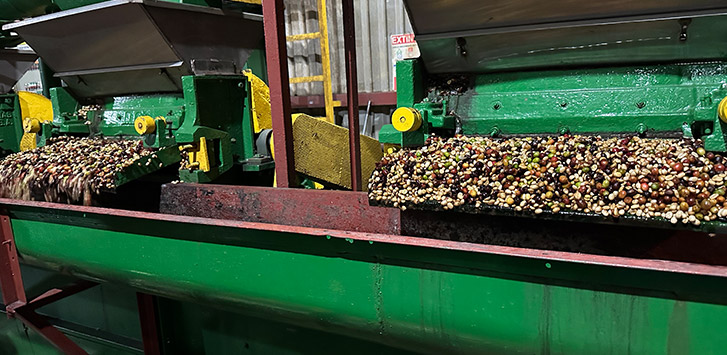
The mill isn’t easy to reach from the top of the farm, where we stayed. After a two-to-three-mile hike down rocky, dusty, barely-there trails, we were exhausted. But we can’t argue with the mill’s placement. The mill is in the perfect location, nestled between two rivers, allowing it to be completely hydro powered. There’s a bridge across the one river, connecting the farm-side to the mill. Reminiscent of Indiana Jones, the rope bridge is thin and rickety, sitting high enough over the water that some us were just a little uncomfortable. But crossing it was well worth the surge of adrenaline.
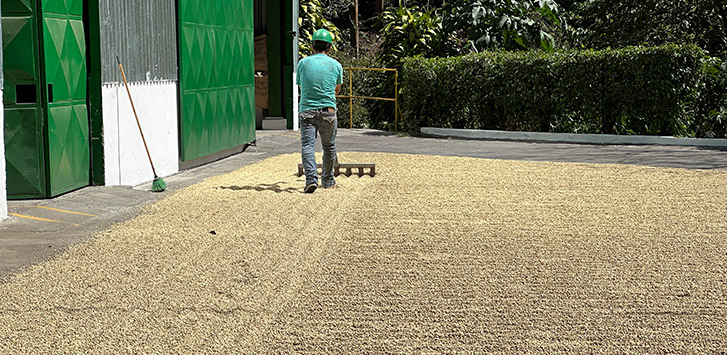
At the time, they weren’t running the mill, so we were able to ask questions, learn about the process, and tour it at our own pace. We got to see where the cherries were washed, where the pulp went, and the massive drums that dried some of the beans. We even stopped and watched a worker raking coffee beans back and forth on a concrete patio to sun-dry them.
Side Note: Sun-dried processing (also called natural processing) is just one of the many different coffee processing methods. Other popular ones include washed (high pressure water strips the pulp away from the seed) and honey (part of the fruit is initially removed by high pressure water, the rest is left to dry and gradually falls away from the bean). Each processing method comprises a day’s worth of work. That means if a worker is sun-drying beans, they are raking them back and forth all day.
Local Costa Rican Coffee Festival
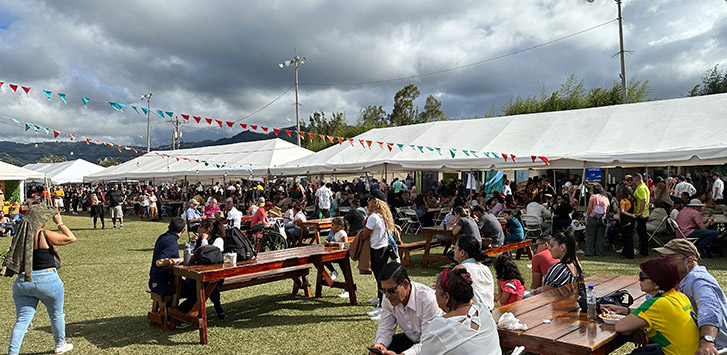
Another highlight of our trip was a local Costa Rican coffee festival! After we finished touring the farm, we drove twenty minutes to the nearest town for a local coffee festival.
One thing you have to know—Costa Rica exports its best coffee, so locals survive off whatever’s left. Our team ranged from expert coffee cuppers to amateurs, but each of us could taste the difference between the finest La Minita coffee and the local coffee offerings.
Every stand we walked past, we were offered free samples of locally grown, locally roasted coffee. While it was an incredible experience, our favorite coffee remained La Minita’s.
But the food was hard to forget! One booth made churros on the spot, mixing the dough, pouring it into a machine, and frying it right in front of us. Goodness were those incredible churros!
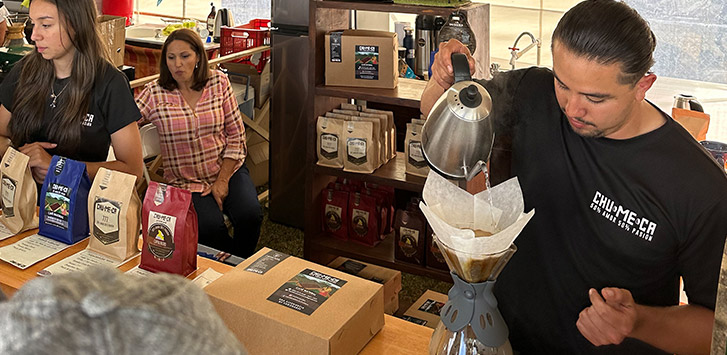
The festival truly had it all—from local coffee samples to mouthwatering food to unique processing methods. One of these stands had people climb on a bike and begin pedaling to power a mini coffee mill and process the coffee cherries. None of us were brave enough to try it, but we were avid watchers.
The entire festival we all looked very out-of-place. Our team members were, quite obviously, the only non-locals there. But that made the experience that much more amazing—it was authentic, a taste of the Costa Rican coffee culture that not many Americans get to witness.
Coffee Cupping in Costa Rica
We spent our last day in Costa Rica doing what we love—drinking coffee, or more accurately, cupping coffee. Like wine tasting, coffee cupping involves two steps—smelling and tasting the coffee.
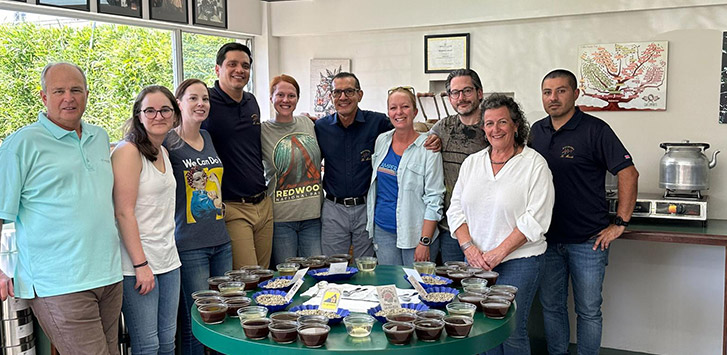
If you’ve never heard of coffee cupping before, it’s a pretty simple process. A 6-ounce cup is set in front of you with a set amount of ground, roasted coffee. You add 3 ounces of hot water, letting the grounds float to the top. Then, you take a spoon and break apart the floating coffee grounds, releasing a strong aroma. This process is the best way to name the coffee’s aromas.
Once you make note of the aromatic elements, add another 3 ounces of hot water to the cup, discarding any crema or grounds that rise to the top. You’ll need to grab a new spoon, scoop up some coffee, and give it a big ole slurp (slurping correctly is truly an art!). Slurping is actually a really important part of this process, allowing air to enter the coffee, enhancing the flavors. This helps you more easily identify the cupping notes. When you’re done, spit the coffee out and start again.
The Coffees We Cupped
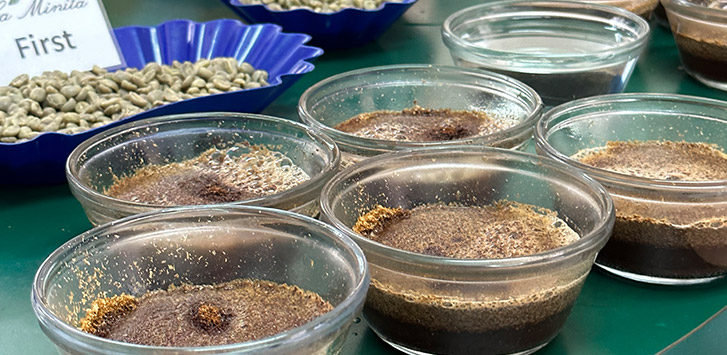
We were incredibly blessed to try so many different coffees from the La Minita farm and some of its micro-lots. Here’s a quick run-through of some of our favorite coffees that we tried. They were too good not to share (and we also – proudly – carry them on our website).
The Hacienda La Minita is grown on the farm we visited! It’s the only coffee to carry the name of the entire parent farm. Milled by itself to maintain its integrity, the La Minita coffee has a medium body with brilliant acidity and notes of orange, caramelized sugar, and fine chocolate. In other words, it’s a CBC favorite and definitely a must-try.
Also grown on the La Minita farm, the El Conquistador is a premium Tarrazu at a non-premium price. This Arabica coffee is defined by the surrounding tropical region with fruity and nutty characteristics, underlying notes of bittersweet chocolate, and a smooth, pronounced body. You’re guaranteed to love it. We did!
The La Gladiola coffee is similar to the La Magnolia that we mentioned above. From the western portion of the Tarrazu valley, La Gladiola coffee beans are purchased from another farm and processed at La Minita’s mill, separately from the other trademark beans. This coffee has a wonderful acidity, buttery mouthfeel, good body, and moderate sweetness with notes of citrus and cocoa. While not grown by La Minita, it does the company proud.
We also tried (and loved) the El Indio, Hacienda La Pradera, Hacienda Rio Negro, and La Sonrisa del Café, ending our cupping session with some of the latest micro-lots from La Minita—Villa Sarchi, a Geisha, San Isidro 48, and two others.
Conclusion
If you’ve made it this far, thanks for letting us share our unforgettable Costa Rica trip with you! We’re incredibly grateful for the opportunity to not only partner with such a great, high quality coffee farm but to also learn more about what we love—coffee!